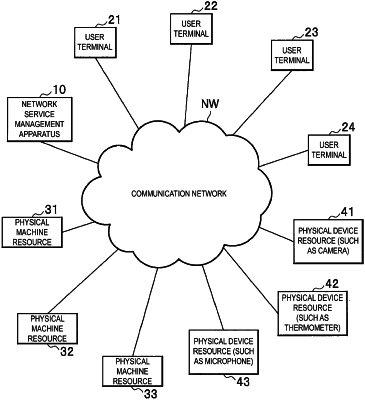| CPC H04L 67/51 (2022.05) [H04L 67/10 (2013.01)] | 17 Claims |

|
1. A service allocation selection method, under an environment where at least a plurality of IoT devices capable of outputting data and a plurality of computers capable of executing a plurality of pieces of application software for processing the output data of each of the plurality of IoT devices are individually connected to one another at different positions via a predetermined communication network, for determining, when a piece of new application software is activated as a specific application x, an optimized combination of the specific application x, one specific computer y selected from among the plurality of computers, and one or more specific devices z selected from among the plurality of IoT devices, the service allocation selection method comprising:
calculating data effectiveness expectation value J(x, z) regarding a combination of the specific application x and a specific device z of the one or more specific devices z, wherein the one or more specific devices z comprise a physical sensor configured to collect data from a surrounding environment in which the one or more specific devices z is located;
calculating a processing time increase amount expectation value G(x, y, z) for the specific application x with a combination with the specific computer y and the specific device z, wherein G(x, y, z) depends on a ratio computed as I(x,y)/J(x, z), wherein I(x,y) is an estimation of processing time for processing the specific application x on the specific computer y while taking into account a computation load of the specific computer y;
calculating an evaluation value F(x, y, z) including at least the processing time increase amount expectation value G(x, y, z); and
selecting a combination of the specific application x, the one specific computer y, and the specific device z by using the evaluation value F(x, y, z).
|